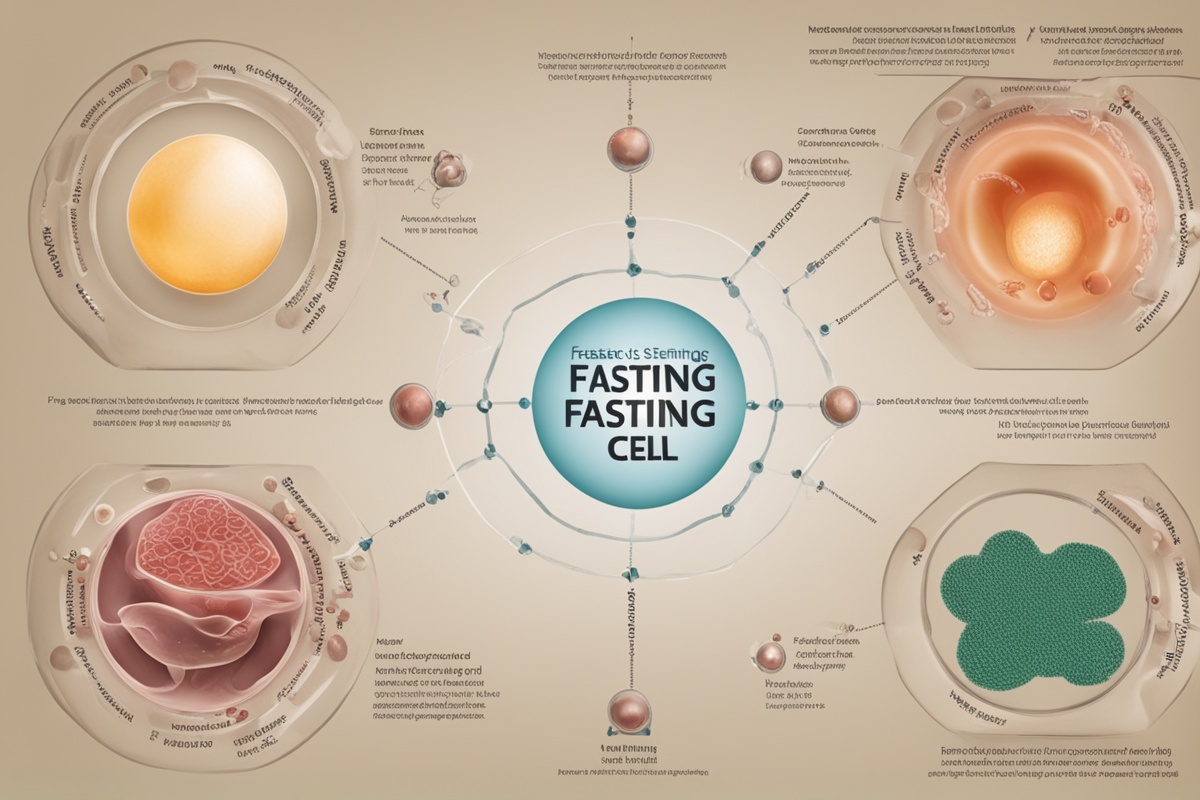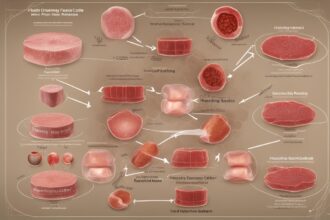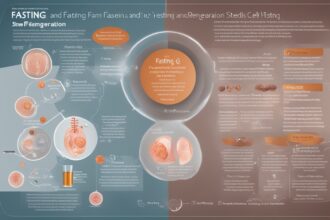Fasting has long been recognized for its potential health benefits, from improving metabolic health to promoting longevity. However, recent scientific research has uncovered a fascinating connection between fasting and the body’s regenerative processes, particularly through the activation of stem cells. This article explores the concept of Boosting Regeneration with Fasting, diving into how abstaining from food for specific periods can stimulate stem cell activity, enhance tissue repair, and potentially slow aging. Whether you’re new to fasting or a seasoned practitioner, understanding this link could transform the way you approach health and wellness.
The Science Behind Fasting and Stem Cell Regeneration
Stem cells are the body’s building blocks, capable of differentiating into various cell types to repair and regenerate tissues. Research has shown that fasting can trigger a protective and regenerative state in the body, often by activating stem cells. During fasting, the body shifts into a mode of conservation and repair, reducing energy expenditure on digestion and redirecting it toward cellular maintenance. A key mechanism behind Boosting Regeneration with Fasting is the activation of autophagy, a process where cells recycle damaged components, which in turn supports stem cell function.
Studies have demonstrated that fasting can increase the production of certain growth factors and hormones that stimulate stem cell proliferation. For instance, fasting has been linked to higher levels of brain-derived neurotrophic factor (BDNF), which supports neural stem cells and brain health. This regenerative potential makes fasting a promising tool for enhancing recovery and combating age-related decline.
How Fasting Triggers Cellular Repair Mechanisms
When you fast, your body undergoes a metabolic switch from using glucose as its primary energy source to burning stored fats, producing ketones in the process. This state of ketosis not only provides energy but also activates pathways that promote cellular repair. One such pathway is the mTOR signaling pathway, which is downregulated during fasting. Lower mTOR activity encourages autophagy and stem cell renewal, key components of Boosting Regeneration with Fasting.
Additionally, fasting reduces inflammation, a major barrier to regeneration. Chronic inflammation can impair stem cell function and accelerate tissue damage. By lowering inflammatory markers, fasting creates an environment where stem cells can thrive and contribute to tissue repair. This dual action of reducing damage and promoting repair underscores the power of fasting as a regenerative strategy.
Types of Fasting for Enhancing Stem Cell Activity
Not all fasting methods are created equal when it comes to Boosting Regeneration with Fasting. Different approaches can yield varying effects on stem cell activity and overall health. Intermittent fasting (IF), which involves cycling between periods of eating and fasting (e.g., 16:8 method), has been shown to support stem cell function by regularly inducing autophagy. Time-restricted eating, where food intake is limited to a specific window each day, can also promote cellular repair.
Prolonged fasting, typically lasting 48–72 hours or more, may have even more profound effects. Research suggests that extended fasts can trigger a “reset” in the immune system by stimulating the regeneration of immune stem cells. However, prolonged fasting should be approached with caution and under medical supervision. For more on different fasting methods, check out our guide on Intermittent Fasting Basics.
Benefits of Boosting Regeneration with Fasting for Aging
As we age, the body’s natural regenerative capacity declines, largely due to reduced stem cell activity. Fasting offers a potential way to counteract this decline by stimulating stem cell renewal and protecting against cellular damage. Boosting Regeneration with Fasting may help improve skin elasticity, enhance muscle repair, and even support cognitive function by promoting neurogenesis (the formation of new neurons).
Moreover, fasting has been linked to increased longevity in animal studies, partly due to its effects on stem cells and cellular repair. While human studies are still emerging, the potential for fasting to slow aging by maintaining a robust stem cell population is an exciting area of research. Learn more about aging and fasting in our post on Fasting for Longevity.
Practical Tips for Fasting to Support Regeneration
If you’re interested in Boosting Regeneration with Fasting, it’s important to start slowly and listen to your body. Begin with a mild form of intermittent fasting, such as the 12:12 method (12 hours of fasting followed by a 12-hour eating window), before progressing to more intensive protocols. Stay hydrated during fasting periods, as dehydration can hinder cellular processes, including regeneration.
Nutrition also plays a critical role. When breaking a fast, focus on nutrient-dense foods like leafy greens, healthy fats, and lean proteins to support stem cell activity. Avoid processed sugars and refined carbs, which can trigger inflammation and counteract the benefits of fasting. For meal ideas, explore our article on Post-Fast Nutrition.
Lastly, consult with a healthcare provider before starting any fasting regimen, especially if you have underlying health conditions or are on medication. Fasting is not suitable for everyone, and personalized guidance can ensure safety and effectiveness. For additional safety tips, see our guide on Fasting Safely.
Potential Risks and Considerations
While Boosting Regeneration with Fasting holds immense promise, it’s not without risks. Prolonged fasting can lead to nutrient deficiencies, muscle loss, or fatigue if not done correctly. Individuals with conditions like diabetes, eating disorders, or those who are pregnant or breastfeeding should avoid fasting unless under strict medical supervision.
Over-fasting or pushing the body beyond its limits can also stress the system, potentially negating the regenerative benefits. Balance is key—fasting should be a tool for health, not a source of harm. Always prioritize well-being and consider integrating fasting with other regenerative practices, such as exercise and adequate sleep. For more on balancing fasting with lifestyle, read our piece on Holistic Health with Fasting.
Disclaimer: The information provided in this article is for educational purposes only and should not be considered medical advice. Fasting may not be suitable for everyone, and individual results can vary. Always consult with a qualified healthcare professional before starting any fasting regimen or making significant changes to your diet or lifestyle. The authors and publishers of this content are not responsible for any adverse effects or consequences resulting from the use of the information provided.
References
- Cheng, C. W., et al. (2014). Prolonged Fasting Reduces IGF-1/PKA to Promote Hematopoietic-Stem-Cell-Based Regeneration. Cell Stem Cell.
- Mihaylova, M. M., et al. (2016). Fasting Activates Fatty Acid Oxidation to Enhance Intestinal Stem Cell Function. Nature.
- de Cabo, R., & Mattson, M. P. (2019). Effects of Intermittent Fasting on Health, Aging, and Disease. Cell Metabolism.
- Longo, V. D., & Mattson, M. P. (2019). Fasting: Molecular Mechanisms and Clinical Applications. New England Journal of Medicine.
- Brandhorst, S., & Longo, V. D. (2019). Fasting and Caloric Restriction in Cancer Prevention and Treatment. Ageing Research Reviews.
This content is for informational purposes only and not a substitute for professional advice.






